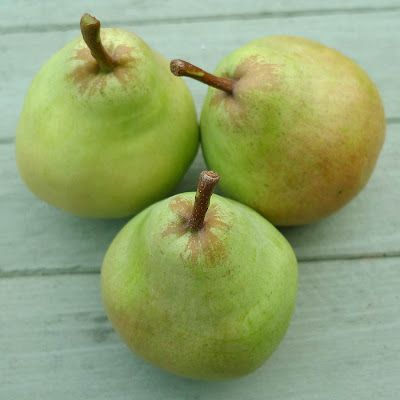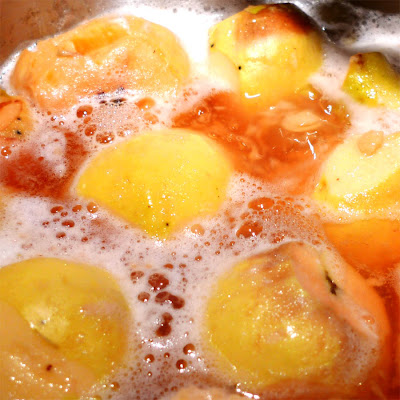 I'm probably not the only person with a number of mouldy windfalls this time of year, so I thought I'd share my thoughts on what to do with them.
I'm probably not the only person with a number of mouldy windfalls this time of year, so I thought I'd share my thoughts on what to do with them.First, leaving them to rot on the ground isn't a terribly good idea. Although it's nice to leave the odd windfall for the birds, it's horrible having a hundredweight of rotting fruit lying around. Fruit can rot anaerobically and produce botulinum toxin which can be fatal for any poultry or birds that ingest it; it can be very slippery to walk over and will attract wasps. If the fruit is affected by pest or diseases, then leaving the spores or larvae lying around just means you will get more of the problem next year.
Ideally any fruit that is diseased should either be burned (not always possible and a potential nuisance to neighbours) or otherwise responsibly disposed of. I put mine in the food waste bins provided by the council. It's virtually the only time we ever use this service, as most other food waste goes to chickens or dogs. Council composting facilities are much better than those that can be achieved at home; they either use large, sealed containers which can be rotated to get even composting at high temperatures, or anaerobically digested to produce electricity.
I really don't like putting large amounts of fruit on my compost heap. Many is the time I've come across a layer of vinegary slime in the middle of otherwise peat-like compost, from a mixture of fruit that just hasn't rotted properly even when chopped up and mixed with straw / manure. If you are going to compost a quantity of windfall fruit, I'd suggest first putting it through a garden shredder, then mixing thin layers in between damp straw to stop it becoming slimey.































